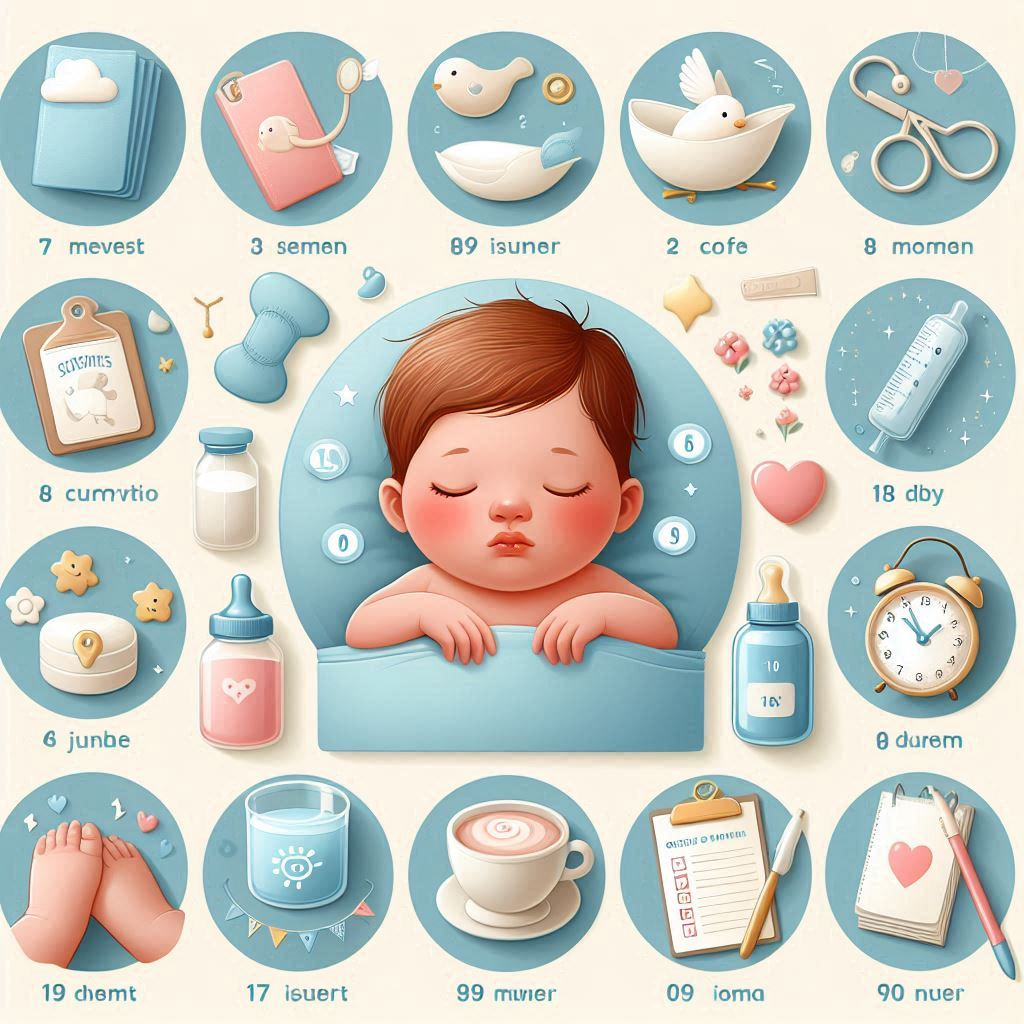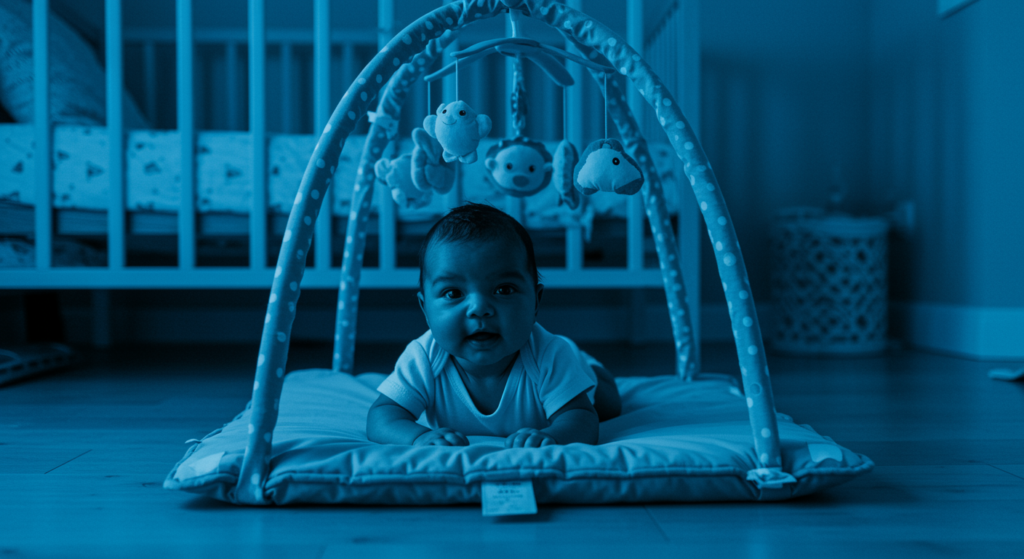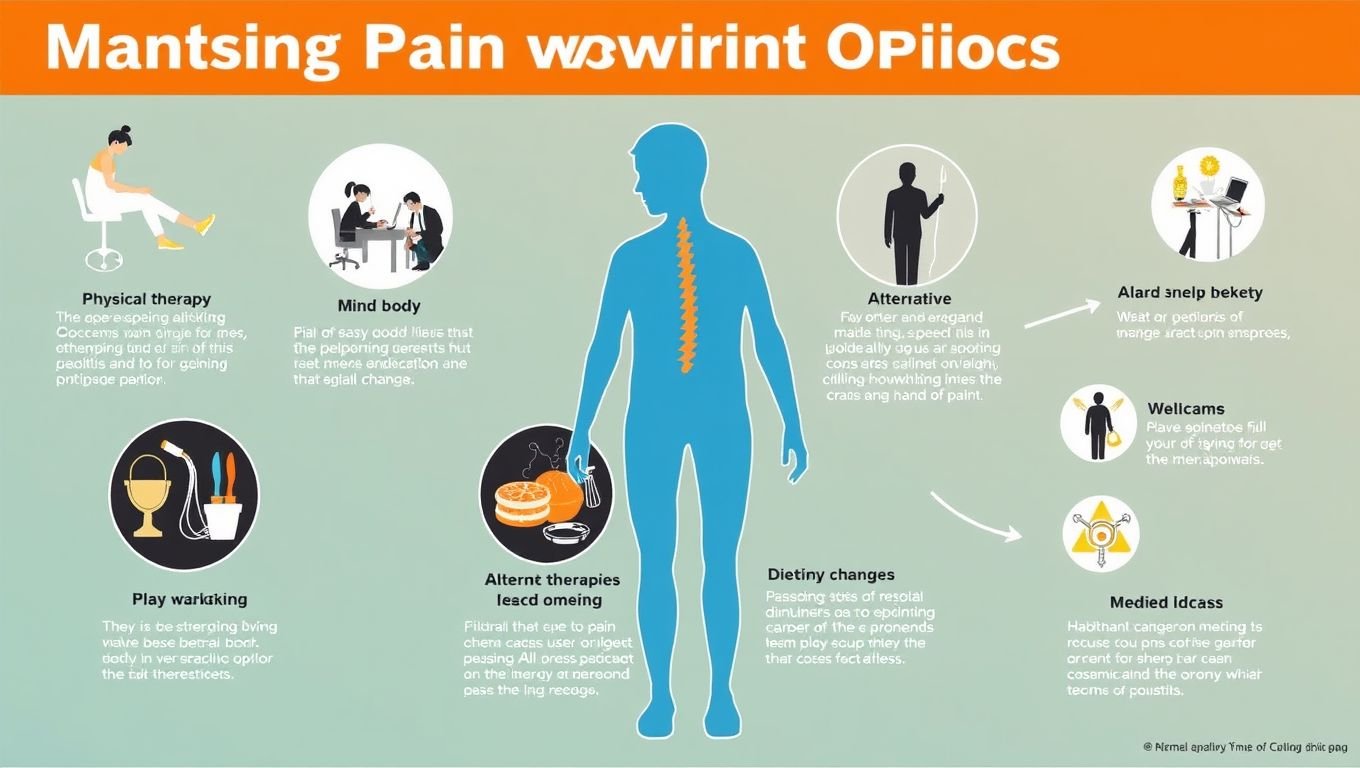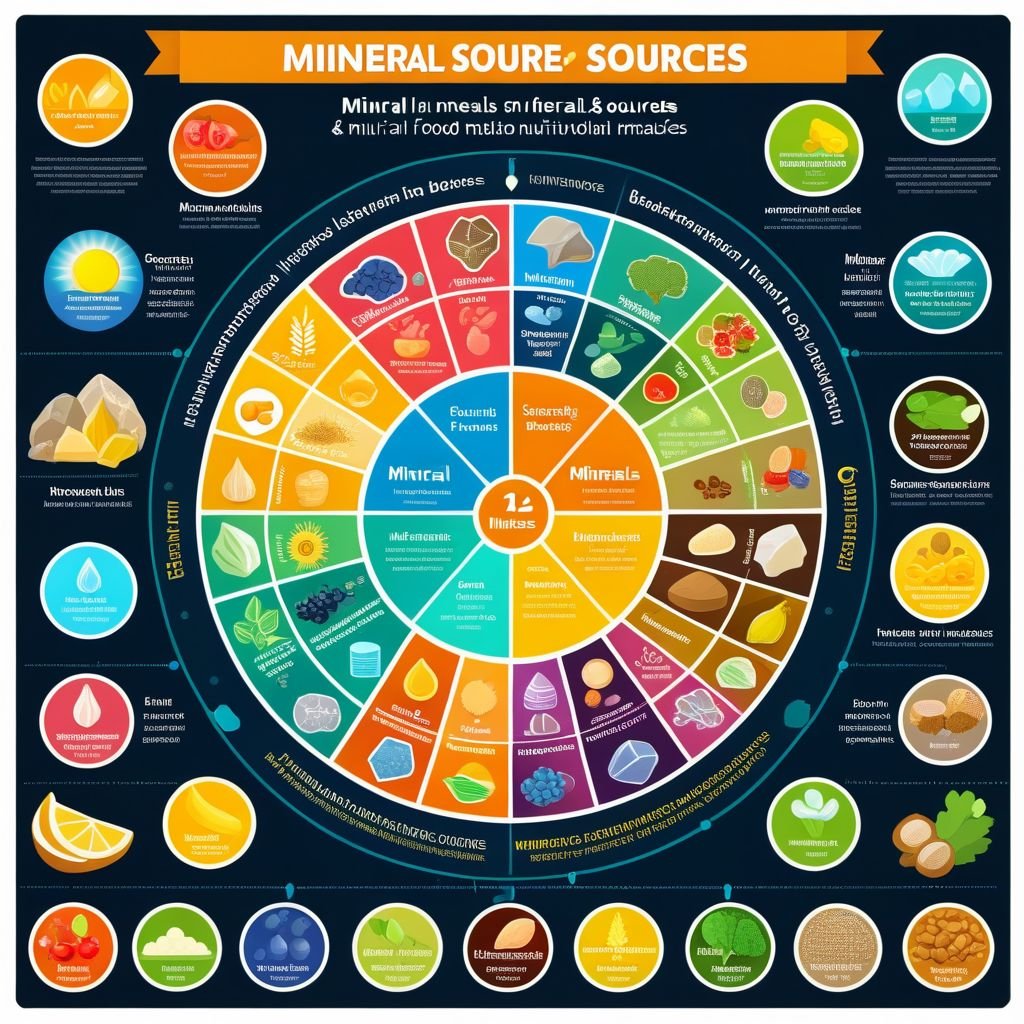
9 Essential Milestones in Newborn Baby Care at Home
Discover key milestones in newborn baby care after birth at home to ensure healthy development and well-being for your little one.

1. Introduction
Overview of the Importance of Tracking Milestones Tracking milestones in newborn baby care is crucial for ensuring healthy development and well-being. Newborns undergo rapid changes in the first few months of life, and keeping track of these milestones helps parents and caregivers monitor their progress and identify any potential issues early on. Understanding and celebrating these milestones not only provides reassurance to parents but also aids in fostering a strong bond between the caregiver and the baby. By staying informed and proactive, parents can better support their newborn’s growth and development, ensuring they receive the best care possible.
Brief Mention of What Will Be Covered in the Article This article will explore nine essential milestones in newborn baby care at home. These milestones include establishing a feeding routine, understanding sleep patterns, developing motor skills, recognizing social and emotional development, supporting sensory development, maintaining hygiene and health practices, noticing changes in skin color and appearance, fostering bonding and attachment, and starting the learning process. Each section will provide practical tips, important information, and expert insights to help parents navigate the exciting and sometimes challenging journey of newborn care.
2. Milestone 1: Establishing a Feeding Routine
Importance of Breastfeeding/Formula Feeding Feeding is one of the most critical aspects of newborn care. Proper nutrition is essential for the baby’s growth, development, and overall health. Breastfeeding is highly recommended due to its numerous benefits, including providing essential nutrients, antibodies, and a unique bonding experience between mother and baby. However, for various reasons, some mothers may choose or need to use formula feeding. Formula feeding can also provide complete nutrition and is a viable alternative to breastfeeding.
Tips for Feeding Schedules
- Newborns typically feed every 2-3 hours: It’s important to establish a consistent feeding schedule to ensure the baby receives adequate nutrition.
- Look for hunger cues: Signs such as rooting, sucking on hands, and fussiness indicate that the baby is hungry and ready to feed.
- Keep track of feeding times and duration: Use a feeding log or app to monitor when and how long the baby feeds. This can help identify patterns and ensure they are getting enough to eat.
- Nighttime feedings: Newborns may need to be fed during the night. Keep the environment calm and quiet to encourage the baby to return to sleep after feeding.
- Cluster feeding: Some babies may have periods of frequent feeding, known as cluster feeding. This is normal and usually occurs during growth spurts.
Signs of Proper Feeding
- Steady weight gain: Regular weight check-ups with the pediatrician will help ensure the baby is growing at a healthy rate.
- Wet and dirty diapers: A well-fed baby will have frequent wet diapers (about 6-8 per day) and regular bowel movements.
- Content and satisfied after feeding: The baby should appear content and satisfied after a feeding session.
- Healthy skin and alertness: A well-nourished baby will have healthy skin, be alert during wakeful periods, and reach developmental milestones appropriately.
By establishing a consistent and effective feeding routine, parents can ensure their newborn receives the necessary nutrition for healthy growth and development. This first milestone sets the foundation for the baby’s overall well-being and future milestones.

3. Milestone 2: Sleep Patterns and Establishing a Sleep Routine
Understanding Newborn Sleep Cycles Newborns have unique sleep patterns and cycles that differ significantly from those of older children and adults. Understanding these cycles is essential for establishing a healthy sleep routine and ensuring the well-being of your baby. Here are some key points about newborn sleep cycles:
- Frequent Sleep Cycles: Newborns sleep for short periods, typically ranging from 2 to 4 hours, and have frequent sleep-wake cycles throughout the day and night.
- Active and Quiet Sleep: Newborns alternate between active sleep (REM) and quiet sleep (non-REM). Active sleep is characterized by rapid eye movement, irregular breathing, and small movements, while quiet sleep is deeper and more restful.
- Gradual Development: As newborns grow, their sleep patterns gradually change, and they start to develop longer sleep periods and more defined sleep cycles.
Tips for Promoting Healthy Sleep Habits Establishing healthy sleep habits early on can help your newborn develop a consistent sleep routine and improve their overall sleep quality. Here are some tips to promote healthy sleep habits:
- Create a Calm Sleep Environment: Ensure that your baby’s sleep area is quiet, dark, and comfortable. Use a white noise machine or soft lullabies to create a soothing atmosphere.
- Establish a Bedtime Routine: Develop a consistent bedtime routine that includes calming activities such as bathing, gentle rocking, and reading a bedtime story. This helps signal to your baby that it’s time to sleep.
- Encourage Daytime Naps: Allow your baby to take regular daytime naps to prevent overtiredness. Keep nap times consistent to help regulate their sleep-wake cycle.
- Watch for Sleep Cues: Pay attention to signs of sleepiness, such as yawning, rubbing eyes, and fussiness. Put your baby to bed when they show these cues to help them fall asleep more easily.
- Limit Stimulating Activities: Avoid stimulating activities and screen time before bedtime. Instead, engage in calming and quiet activities to help your baby wind down.
Safe Sleep Practices Ensuring your baby’s safety during sleep is of utmost importance. Here are some safe sleep practices to follow:
- Place Baby on Their Back: Always place your baby on their back to sleep. This reduces the risk of sudden infant death syndrome (SIDS).
- Use a Firm Mattress: Ensure that your baby sleeps on a firm and flat mattress with a fitted sheet. Avoid using soft bedding, pillows, and stuffed animals in the crib.
- Room Sharing: It’s recommended to have your baby sleep in the same room as you for the first 6-12 months. Use a separate crib or bassinet placed close to your bed.
- Avoid Overheating: Dress your baby in light sleepwear and maintain a comfortable room temperature. Avoid heavy blankets and overdressing to prevent overheating.
- Breastfeeding: If possible, breastfeed your baby, as it has been shown to reduce the risk of SIDS and provide numerous health benefits.
By understanding newborn sleep cycles, promoting healthy sleep habits, and following safe sleep practices, you can help your baby develop a consistent sleep routine and ensure their safety and well-being during sleep. This milestone sets the foundation for your baby’s healthy development and overall growth.
4. Milestone 3: Developing Motor Skills
Tummy Time Importance Tummy time is a crucial activity for newborns as it helps develop their motor skills and strengthens their muscles. When babies spend time on their stomachs while awake and supervised, they learn to lift their heads, push up with their arms, and eventually roll over. These actions are essential for building the upper body strength needed for crawling, sitting, and walking. Here are some key points about tummy time:
- Prevents Flat Spots: Tummy time helps prevent positional plagiocephaly (flat spots on the head) by reducing the amount of time babies spend on their backs.
- Encourages Muscle Development: It strengthens the neck, shoulders, arms, and back muscles, promoting overall physical development.
- Enhances Motor Skills: Tummy time aids in the development of gross motor skills, such as reaching, pushing, and rolling.
- Improves Coordination: The movements made during tummy time help improve hand-eye coordination and spatial awareness.
Encouraging Physical Development Supporting your baby’s physical development is essential for reaching motor skill milestones. Here are some ways to encourage physical development:
- Daily Tummy Time: Aim for short, frequent tummy time sessions throughout the day. Start with a few minutes and gradually increase the duration as your baby becomes more comfortable.
- Interactive Play: Engage in interactive play with your baby by using toys, mirrors, and colorful objects to capture their attention and encourage movement.
- Provide Safe Space: Ensure a safe and comfortable environment for your baby to explore and move around. Use soft mats or blankets to cushion the floor.
- Assist with Movements: Gently guide your baby’s movements by helping them roll over or reach for toys. Encourage them to push up on their arms and lift their heads.
- Positive Reinforcement: Praise and encourage your baby during tummy time and other physical activities. Positive reinforcement helps build their confidence and motivation.
Tracking Motor Skill Milestones Monitoring your baby’s motor skill development is important to ensure they are progressing as expected. Here are some common motor skill milestones to track:
- 0-3 Months: Lifts head briefly during tummy time, moves arms and legs, follows objects with eyes, and begins to push up on arms.
- 3-6 Months: Holds head steady, rolls over from tummy to back, reaches for and grasps toys, and begins to sit with support.
- 6-9 Months: Sits without support, transfers objects from one hand to another, starts to crawl, and may pull up to stand.
- 9-12 Months: Crawls efficiently, stands with or without support, cruises along furniture, and may take first steps.
- 12+ Months: Walks independently, climbs stairs with assistance, and improves coordination and balance.
By understanding the importance of tummy time, encouraging physical development, and tracking motor skill milestones, you can support your baby’s growth and ensure they reach their developmental milestones. This milestone is essential for building the foundation for future physical activities and overall well-being.

5. Milestone 4: Social and Emotional Development
Recognizing Social Behaviors Social behaviors in newborns are the early signs of their ability to interact with others. Recognizing these behaviors helps parents understand their baby’s needs and emotional states. Here are some key social behaviors to look for in newborns:
- Eye Contact: Newborns may start making brief eye contact, showing their interest in faces and their surroundings.
- Smiling: Around 6-8 weeks, babies may start giving social smiles in response to familiar faces and voices.
- Cooing and Gurgling: These early vocalizations are ways for newborns to communicate and express themselves.
- Imitating Facial Expressions: Newborns may try to mimic the facial expressions of their caregivers, such as sticking out their tongue or opening their mouth.
- Following Movements: Babies may track movements with their eyes, showing their growing awareness and interest in their environment.
Encouraging Bonding and Interaction Bonding and interaction are essential for a newborn’s emotional development. Here are some ways to encourage bonding and interaction with your baby:
- Skin-to-Skin Contact: Holding your baby close and having skin-to-skin contact helps create a strong emotional bond and provides comfort.
- Responsive Feeding: Whether breastfeeding or bottle-feeding, make feeding times a special bonding moment by maintaining eye contact and talking to your baby.
- Talking and Singing: Regularly talking, singing, and reading to your baby helps them become familiar with your voice and promotes language development.
- Gentle Touch and Massage: Gentle touch and baby massage can soothe your baby and strengthen the parent-child bond.
- Playtime: Engage in age-appropriate play activities, such as showing colorful toys, making funny faces, or playing peek-a-boo. These activities stimulate your baby’s senses and encourage interaction.
Signs of Emotional Development Emotional development in newborns is reflected in their ability to express and regulate their emotions. Here are some signs of emotional development to look for:
- Attachment to Caregivers: Newborns show preference for their primary caregivers by seeking comfort and displaying calmness when held or spoken to by them.
- Expression of Comfort and Discomfort: Babies express comfort through cooing and smiling and discomfort through crying and fussiness. Recognizing these cues helps caregivers respond appropriately.
- Calming Themselves: Over time, babies start to develop self-soothing techniques, such as sucking on their thumb or a pacifier, to calm themselves when upset.
- Interest in Social Interaction: As babies grow, they show increased interest in social interactions, such as reaching out to touch faces, responding to sounds, and showing excitement during playtime.
- Developing Trust: Through consistent and responsive caregiving, babies develop a sense of trust and security, which forms the foundation for healthy emotional development.
By recognizing social behaviors, encouraging bonding and interaction, and observing signs of emotional development, parents can support their newborn’s social and emotional growth. This milestone is crucial for building strong relationships, fostering healthy emotional regulation, and promoting overall well-being.
6. Milestone 5: Sensory Development
Developing Senses (Sight, Hearing, Touch) Newborns experience the world through their senses, and their sensory development is a critical aspect of their growth. The key senses—sight, hearing, and touch—develop rapidly in the first few months of life. Here’s an overview of each sense:
- Sight: At birth, a newborn’s vision is blurry, but they can see objects about 8-12 inches away. Over time, their vision sharpens, and they begin to focus on faces and high-contrast patterns. By 3-4 months, babies can track moving objects and recognize familiar faces.
- Hearing: Newborns have well-developed hearing at birth and can recognize their mother’s voice. They startle at loud noises and respond to soothing sounds. By a few months old, babies turn their heads toward sounds and begin to distinguish different tones and pitches.
- Touch: Touch is one of the most developed senses at birth. Babies respond to gentle touch and can feel pain, temperature, and texture. Skin-to-skin contact is especially comforting and plays a vital role in bonding and emotional development.
Activities to Stimulate Senses Engaging your baby in activities that stimulate their senses helps promote healthy sensory development. Here are some activities to try:
- Visual Stimulation: Use high-contrast toys, books, and mobiles to capture your baby’s attention. Move objects slowly in front of their face to encourage tracking.
- Auditory Stimulation: Talk, sing, and read to your baby regularly. Play a variety of gentle sounds and music to expose them to different auditory experiences. Use rattles and soft bells for interactive play.
- Tactile Stimulation: Provide a range of textures for your baby to explore, such as soft blankets, textured toys, and sensory mats. Offer gentle massages and skin-to-skin contact to enhance their sense of touch.
- Movement Activities: Encourage your baby to move and explore their environment. Tummy time, reaching for toys, and gentle rocking can help stimulate their senses and promote motor development.
Tracking Sensory Milestones Monitoring your baby’s sensory development milestones helps ensure they are progressing as expected. Here are some common sensory milestones to track:
- 0-3 Months: Follows objects with eyes, responds to loud sounds, recognizes caregiver’s voice, enjoys skin-to-skin contact, and shows interest in high-contrast patterns.
- 3-6 Months: Tracks moving objects, turns head toward sounds, reaches for and grasps objects, responds to different tones, and explores textures with hands and mouth.
- 6-9 Months: Recognizes familiar faces from a distance, reacts to music and rhythmic sounds, shows preference for certain textures, and uses hands to explore and manipulate objects.
- 9-12 Months: Points to objects of interest, responds to their name, plays with a variety of textured toys, and demonstrates improved hand-eye coordination.
By focusing on sensory development, engaging in stimulating activities, and tracking sensory milestones, you can support your baby’s growth and ensure they reach their developmental milestones. This milestone is essential for building a foundation for future learning and overall well-being.
7. Milestone 6: Hygiene and Health Practices
Importance of Regular Hygiene Maintaining proper hygiene is essential for a newborn’s overall health and well-being. Regular hygiene practices help prevent infections, skin irritations, and other health issues. Ensuring that your baby is clean and comfortable contributes to their happiness and development. Good hygiene also fosters a sense of routine and security for your baby, which is important for their emotional and psychological growth.
Tips for Newborn Bathing and Grooming Bathing and grooming a newborn can be a delicate process. Here are some tips to help you take care of your baby’s hygiene needs effectively:
- Bathing:
- Frequency: Newborns do not need daily baths. Bathing 2-3 times a week is usually sufficient to keep them clean. However, you should clean their face, neck, and diaper area daily.
- Sponge Baths: Until the umbilical cord stump falls off and heals, give your newborn sponge baths using a soft washcloth and mild baby soap.
- Tub Baths: Once the umbilical cord stump has healed, you can transition to tub baths. Use a baby bathtub with lukewarm water (around 37°C or 98.6°F). Support your baby’s head and neck with one hand while gently washing them with the other.
- Gentle Products: Use mild, fragrance-free baby soap and shampoo to avoid skin irritation. Rinse thoroughly to remove all soap residues.
- Drying: Pat your baby dry with a soft towel, paying special attention to skin folds and creases.
- Grooming:
- Nail Care: Newborns’ nails grow quickly and can be sharp. Trim their nails regularly using baby nail clippers or an emery board to prevent scratches.
- Hair Care: Wash your baby’s hair with a gentle baby shampoo during baths. If your baby has cradle cap (a common scalp condition), gently massage the scalp with a soft brush to loosen the scales.
- Skin Care: Apply a gentle, fragrance-free moisturizer to keep your baby’s skin soft and hydrated. Be cautious with diaper creams and lotions, and choose products specifically formulated for babies.
Monitoring Health and Wellness Regularly monitoring your baby’s health and wellness is crucial for early detection of any issues and ensuring their continued growth and development. Here are some key aspects to monitor:
- Growth and Weight: Keep track of your baby’s growth and weight gain. Regular check-ups with the pediatrician will help ensure that your baby is growing at a healthy rate.
- Feeding and Digestion: Monitor your baby’s feeding habits and digestion. Look for signs of proper feeding, such as steady weight gain, regular wet and dirty diapers, and contentment after feeding.
- Sleep Patterns: Observe your baby’s sleep patterns and ensure they are getting enough sleep. Healthy sleep is essential for growth and development.
- Skin and Appearance: Pay attention to any changes in your baby’s skin color, rashes, or other skin conditions. Newborn skin is delicate and requires special care.
- Behavior and Development: Watch for signs of social and emotional development, such as eye contact, smiling, and cooing. Track motor skill milestones to ensure your baby is developing physically.
By prioritizing regular hygiene practices, following proper bathing and grooming tips, and monitoring your baby’s health and wellness, you can ensure that your newborn stays healthy, happy, and comfortable. This milestone is fundamental for your baby’s overall well-being and sets the stage for their continued growth and development.
9. Milestone 8: Bonding and Attachment
Importance of Bonding with Your Baby Bonding with your baby is a vital aspect of newborn care, as it creates a strong emotional connection that lays the foundation for healthy relationships and emotional well-being. This bond promotes a sense of security and trust, helping your baby feel loved and protected. Bonding also supports brain development and helps regulate your baby’s stress responses. When caregivers consistently meet their baby’s needs with love and attention, it fosters a nurturing environment that is essential for overall growth and development.
Ways to Enhance Bonding
- Skin-to-Skin Contact: Hold your baby close with skin-to-skin contact, especially during feeding and cuddling. This helps regulate their body temperature, heart rate, and promotes a feeling of safety.
- Responsive Feeding: Whether breastfeeding or bottle-feeding, use feeding times as an opportunity to maintain eye contact, talk, and connect with your baby.
- Talking and Singing: Regularly engage with your baby by talking, singing, and reading to them. This helps them become familiar with your voice and promotes language development.
- Gentle Touch and Massage: Use gentle touch and baby massage to soothe and comfort your baby. This helps them feel secure and strengthens the parent-child bond.
- Interactive Play: Participate in age-appropriate play activities, such as showing colorful toys, making funny faces, or playing peek-a-boo. These activities stimulate your baby’s senses and encourage interaction.
Recognizing Attachment Signals Attachment signals are cues that your baby gives to show their need for comfort, security, and interaction. Recognizing these signals helps you respond appropriately and strengthens the bond between you and your baby. Some common attachment signals include:
- Seeking Comfort: Your baby may reach out to be held, cry when separated from you, or calm down quickly when you hold them.
- Eye Contact: Maintaining eye contact with you is a sign that your baby is seeking connection and interaction.
- Smiling and Cooing: When your baby smiles or coos at you, it indicates their happiness and desire to engage with you.
- Following Your Movements: Your baby may track your movements with their eyes, showing their interest in being close to you.
- Imitating Facial Expressions: Babies often try to mimic your facial expressions, such as smiling or opening their mouth, as a way to connect with you.
10. Milestone 9: Starting the Learning Process
Early Learning Activities Early learning activities play a crucial role in stimulating your baby’s cognitive and sensory development. Engaging in these activities helps your baby learn about their environment, develop problem-solving skills, and build a foundation for future learning. Here are some early learning activities to try:
- Tummy Time: Encourage tummy time to strengthen muscles and promote motor skill development. Place toys within reach to motivate your baby to explore.
- Sensory Play: Provide toys with different textures, colors, and sounds to stimulate your baby’s senses. Sensory play helps them develop their understanding of the world around them.
- Reading: Read age-appropriate books to your baby. The sound of your voice and the visual stimulation from the pictures promote language development and cognitive skills.
- Singing and Rhyming: Sing songs and nursery rhymes to your baby. The rhythm and repetition of words help with language development and memory.
- Exploring Toys: Offer a variety of toys that encourage grasping, shaking, and reaching. These activities support fine motor skills and hand-eye coordination.
Encouraging Curiosity and Exploration Fostering a sense of curiosity and exploration is essential for your baby’s cognitive development. Here are some ways to encourage curiosity:
- Create a Safe Environment: Ensure your baby’s play area is safe and free of hazards, allowing them to explore freely.
- Follow Their Lead: Pay attention to your baby’s interests and provide opportunities for them to explore objects and activities that capture their attention.
- Introduce New Experiences: Gradually introduce new toys, textures, and environments to stimulate your baby’s curiosity and encourage exploration.
- Positive Reinforcement: Praise and encourage your baby’s efforts to explore and learn. Positive reinforcement boosts their confidence and motivation.
Recognizing Early Learning Milestones Tracking early learning milestones helps you monitor your baby’s cognitive and sensory development. Here are some common early learning milestones to look for:
- 0-3 Months: Responds to sounds and voices, follows objects with eyes, shows interest in faces, and begins to grasp objects.
- 3-6 Months: Explores objects with hands and mouth, responds to their name, makes sounds and babbles, and shows curiosity about surroundings.
- 6-9 Months: Looks for hidden objects, imitates sounds and gestures, explores toys by banging and shaking, and recognizes familiar people and objects.
- 9-12 Months: Understands simple words and commands, points to objects of interest, engages in interactive play, and shows problem-solving skills.
By focusing on bonding and attachment, engaging in early learning activities, encouraging curiosity and exploration, and recognizing early learning milestones, you can support your baby’s cognitive and emotional development. These milestones are essential for building a strong foundation for future learning and overall well-being.
11. Conclusion
Recap of the Milestones Throughout this article, we have explored nine essential milestones in newborn baby care at home, which are crucial for ensuring healthy development and well-being. Let’s recap these milestones:
- Establishing a Feeding Routine: Proper nutrition through breastfeeding or formula feeding, understanding feeding schedules, and recognizing signs of proper feeding.
- Sleep Patterns and Establishing a Sleep Routine: Understanding newborn sleep cycles, promoting healthy sleep habits, and following safe sleep practices.
- Developing Motor Skills: Importance of tummy time, encouraging physical development, and tracking motor skill milestones.
- Social and Emotional Development: Recognizing social behaviors, encouraging bonding and interaction, and observing signs of emotional development.
- Sensory Development: Developing senses (sight, hearing, touch), engaging in sensory-stimulating activities, and tracking sensory milestones.
- Hygiene and Health Practices: Importance of regular hygiene, tips for bathing and grooming, and monitoring health and wellness.
- Changes in Skin Color and Appearance: Understanding and caring for newborn skin, recognizing normal changes, and knowing when to seek medical advice.
- Bonding and Attachment: The importance of bonding, ways to enhance bonding, and recognizing attachment signals.
- Starting the Learning Process: Early learning activities, encouraging curiosity and exploration, and recognizing early learning milestones.
Encouragement for Parents to Track and Celebrate Progress As you navigate the journey of newborn care, it’s essential to track your baby’s progress and celebrate their achievements, no matter how small they may seem. Keeping a journal or using apps to record milestones can help you stay organized and monitor your baby’s development. Celebrating progress, whether it’s your baby’s first smile, their ability to lift their head, or their first steps, brings joy and encourages positive reinforcement.
Remember, every baby develops at their own pace, and variations in reaching milestones are normal. If you ever have concerns about your baby’s development, don’t hesitate to consult with your pediatrician. They can provide guidance, reassurance, and address any potential issues.
Final Thoughts and Additional Resources Caring for a newborn can be both rewarding and challenging. By understanding and supporting your baby’s developmental milestones, you create a nurturing environment that fosters their growth and well-being. Trust your instincts, be patient, and cherish the special moments with your baby.
For additional resources and support, consider the following:
- Books: Look for reputable books on newborn care and child development.
- Pediatrician Consultations: Regular check-ups with your pediatrician provide valuable insights and personalized advice.
- Parenting Classes: Attend parenting classes or support groups to connect with other parents and learn from experts.
- Online Resources: Explore reputable websites and online communities dedicated to newborn care and parenting.
If you have any more questions or need further assistance, feel free to ask. Wishing you and your baby a wonderful journey of growth and discovery! 🌟👶📚



